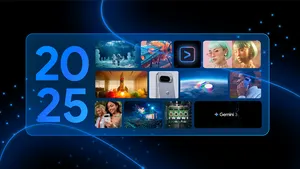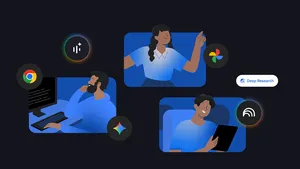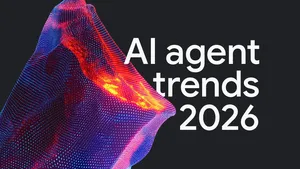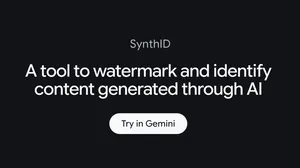See our new ChromeOS wallpapers starring Jupiter’s UV auroras
For years, NASA’s Hubble Space Telescope has used its ultraviolet-observing capabilities to capture images of the intense blue auroras that light up the atmosphere at the poles of Jupiter. Emitting light in UV and X-ray wavelengths, the phenomena — which look like bright spiral galaxies at the planet’s crown and base — are not visible to the human eye. They have, however, inspired the human imagination.
Visual designer Hannah Lee, who works on the team behind ChromeOS’s annually released new wallpapers and screensavers, first came across Hubble’s UV images of the planet while reading a NASA article in 2023 and digging further to investigate the auroras. Around the same time, she was testing our AI image-generation tools and had just finished a documentary about UV photography.
“It was happenstance that these things all came at the same time,” Hannah says. “But it got me thinking, ‘I wonder if I can use AI to visualize the auroras to help bring this concept to life?'’”
Turns out you can. ChromeOS recently released four new wallpapers and a screensaver based on NASA’s photos and 3D renderings of Jupiter’s auroras exclusively for Chromebook Plus machines. The wallpapers show the auroras as they appear during the planet’s day, night, sunset and sunrise, and change automatically to reflect the local time where you are (on Earth). In the animated screensaver, we see shadows sweeping over the rotating planet, stars panning across the black expanse behind and flame-like auroras dancing at its southern pole.
Jupiter at sunrise
Jupiter during the day
Jupiter at sunset
Jupiter at night
The collection will first be available exclusively on the new Lenovo Chromebook Plus 14, which comes with a bright, OLED Full High Definition display. "OLED has excellent performance with high contrast, dark blacks and bright colors," says Elizabeth Chiu, a visual design lead on the team. "The space theme works perfectly."
When work began on the new themes last year, the team was excited about the aurora suggestion. It perfectly matched their ambition to design something that spoke to the intersection of science, nature and visionary technology. And the recent introduction of higher performance Chromebook Plus machines meant they could create more elaborate imagery without needing to worry about how lower screen quality would impact resolution or if their designs would drain battery.
NASA’s rendering of the auroras on Jupiter.
Still, visualizing the unseeable would be a challenge — and they turned to NASA for help.
In regular video meetings, the agency’s Scientific Visualization Studio provided access to more of Hubble’s imagery and answered the team’s questions. They wanted to know, for instance, if the UV aurora was predominantly blue/cyan like this UV image, more blue/violet like this video or more directly violet like this photo; and whether the colors change at day and night, when passed through sunlight.
They also asked for more visual assets, like hi-res videos of how the aurora moves through a full day cycle. And, on NASA’s advice, they decided to adjust their composition to capture the south pole, rather than the north, so they could feature Jupiter’s Great Red Spot alongside the aurora for better recognition. “We used this information and these assets to try to create the most scientifically accurate rendering possible, even working with NASA to consider the placement of the sun and specific stars seen around Jupiter at different angles,” Hannah says.
In one early WIP 3D render, the representations of the planet at night were incorrect. The team used tools like NASA’s Eyes on the System (inset, right) to produce a more accurate depiction.

UK-based artist and creative director Vladislav Solovjov joined the team for these NASA meetings. He was selected to help bring the rendering to life — with the help of our AI tools — because of his experience with AI image generation and animation, including rendering auroras and making digital compositions for wallpapers and screensavers.
“Vlad and the team worked with Imagen not to create the visuals themselves, but to steer the art direction,” Hannah says. “Since Jupiter is a ball of gas, it doesn’t have a solid terrain, so we’d upload images and ask, ‘If you were to look at this from below, from standing on the ‘surface’ of Jupiter, what would it look like?’ Or ‘How do the colors change based on the time of day?’”
Right now, the team is brainstorming for their next set of images for an upcoming device release. “With these latest themes, we’ve unlocked new creative and collaborative possibilities — I mean, to work with actual NASA scientists who study this phenomenon on a daily basis was a career highlight,” Hannah says. “It feels like the sky… well, beyond the sky… is the limit.”






